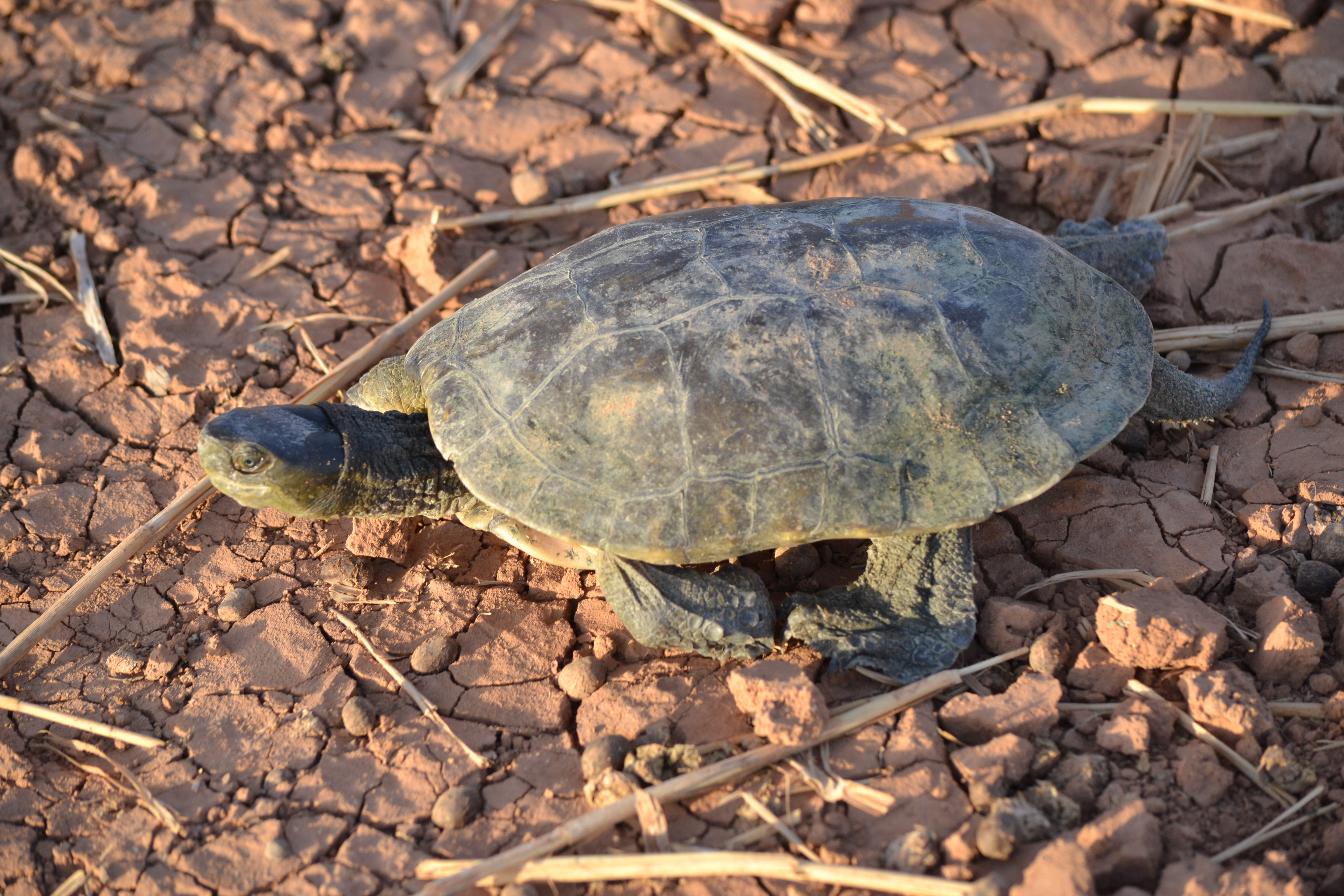AH News: An in-depth description of population structure in a vulnerable pond turtle from Southern Morocco
The devastating impact of human activities on freshwater ecosystems is causing a steady decline in freshwater turtles all around the world. However, the affected species are scarcely studied and many details of their life history are still poorly understood. Turtles inhabiting Northwestern Africa are particularly endangered, since they face extremely arid environmental conditions that limit gene flow and affect both the distribution and the structure of populations.
The Saharan Pond Turtle Mauremys leprosa saharica is a wildly tolerant freshwater turtle, widely distributed in Morocco. In a study recently accepted for publication on Acta Herpetologica, 7 populations from four different drainages were studied in order to evaluate the amount of phenotypic plasticity showcased by the species. A total of 224 individuals were captured, sexed, weighed and measured (carapace length, width and height; plastron length; tail length; pre-anal length). For each individual, the investigators calculated the body condition index, sexual dimorphism index, sphericity index and flatness index. The morphological features were then compared both within and between populations.
Ph.: Mauremys leprosa saharica, courtesy of Dr. Loulida Soumia

The sex ratio resulted to be balanced in 2 populations, female biased in 3, and male biased in the remaining two. The difference might arise from different mortality of males and females at different sites. Since it seems to be biased by the time of the year, it may also reflect different ecology and behavior between the sexes. Finally, it could also be related to sex determinism depending on temperature: this is a very alarming scenario, suggesting that climate change may make one sex predominant over the other, leading - in the long run - to local extinctions. In addition, in most of the sites under enquiry, the rate of juveniles was below 30%, suggesting a low turnover rate and high juvenile mortality, due to predation or habitat alteration.
Body condition index was different between populations, but not between sexes at every single site: this suggests that the observed dimensional differences are mainly due to environmental differences between the study sites. Although sexual dimorphism, with females being larger than males, is the normality in M. leprosa saharica, the study found males to be larger than females in one population: this unusual findings may result from the inclusion of immature specimens in the sample. A more fascinating explanation relates the degree of sexual size dimorphism to environmental productivity: in sites with scarce resources, females might be forced to attain sexual maturity at a lower size, in order to allocate energy in the reproductive effort. Similarly, ecological conditions influence the shape (flatness vs sphericity) of the individuals, as well as their growth pattern. All in all, the finding of the study underlines the fundamental importance of environmental conditions on the growth, ecology and morphology of the species: this is another important reminder of the necessity to limit the impact of human-driven habitat alteration.
Find out more about the detailed study on M. leprosa saharica here.
Ph.: Mauremys leprosa saharica, courtesy of Dr. Loulida Soumia

See you again on August 23rd!
